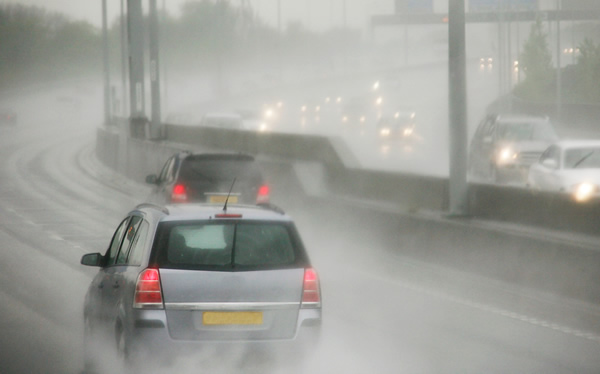
As cold weather and dark nights continue to pose challenging conditions for drivers throughout winter, more of us will find ourselves reaching to switch on our fog lights. But despite their seemingly simple function, many people still misuse and misunderstand when fog lights should be used.
Fog lights are designed to enhance safety through improving visibility – but not employing your fog lights properly (either through not using them at all, or overusing them) could put you and other road users in danger.
What are fog lights?
‘Fog lights’ are brighter supplementary lights situated in your rear (and sometimes front) headlamps that are designed to aid visibility when bad weather conditions make it more difficult to see the road ahead. Mounted lower than the headlights, fog lights can be used during rain, mist, fog, smoke or even dust. They became a legal requirement in the late 1980s – although only rear fog lights are still mandatory according to UK law.
Are fog lights necessary?
Due to developments in vehicular technology, many argue that fog lights are actually redundant. You may have noticed in recent years that car headlights have become increasingly brighter – thanks to LED bulbs which throw out a lot more light than traditional incandescent bulbs. Some newer cars don’t even have a front ‘fog light’ function. LED daytime running lights (DLRs) replace fog lights in many cases. However, for those that do, knowing when and how to use them is key to avoid potential incidents on the road.
Why do fog lights cause confusion?
Confusion surrounding fog lights seems to stem from a misunderstanding about what they’re designed for, and when they should be used. Although the name suggests that they should be used in foggy conditions, the presence of fog or mist doesn’t automatically mean you should be reaching for that switch. Fog lights should also not be confused with dipped headlights, which can be used in the absence of street lamps when visibility is impaired, such as on country lanes.
The bottom line is that fog lights should be reserved only for occasions where your usual headlights don’t provide sufficient visibility. The Highway Code states that: “You MUST use headlights when visibility is seriously reduced, generally when you cannot see for more than 100 metres (328 feet). You may also use front or rear fog lights but you MUST switch them off when visibility improves.”
How and when to use fog lights
Fog lights tend to be massively overused by drivers who switch them on whenever visibility is slightly low. But whilst front fog lights help to light your way, they are also designed to increase your visibility for other drivers and pedestrians. Keeping fog lights on when they don’t need to be can easily dazzle and distract other road users.
Fog lights are usually operated by a separate switch, so they don’t come on automatically when turning on the lights (or when your lights come on, if you drive a newer model). It’s important not to forget to switch them off should conditions and visibility improve, or if you see an oncoming vehicle approaching. Continue to evaluate the situation and switch your fog lights off straight away if the conditions improve.
You should also take extra care during wet weather conditions – as the extra brightness from fog lights can cause a glare on the road surface which could obscure visibility for you and other road users.